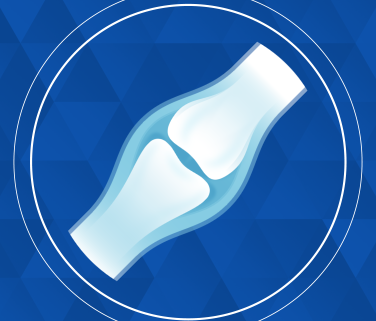After age 50, one in three women and one in five men around the world will experience an osteoporosis-related fracture.1 What’s more, even after their first fracture, very few people get the care they need to prevent the next one. This adds up to 9 million or more osteoporosis fractures worldwide every year.2 This means two fractures have happened in the time it’s taken to read this paragraph.
Not only that, but fractures and other bone-related problems can be a concern for adults of any age living with certain health conditions. For example, women with breast cancer can be at higher risk for fractures, pain and reduced mobility.
Amgen is supporting programs and participating in collaborations with leading bone experts and patient advocates around the world to improve osteoporosis care and fracture prevention, so fewer people become part of these sobering statistics. Here is a look at how two of these programs are making headway.
Multi-year program improves post-fracture care at hundreds of medical facilities across the world
Despite the fact that one broken bone is likely to lead to another, most patients only receive care to mend a current fracture but no comprehensive care for underlying osteoporosis. One program called Capture the Fracture® is changing that by transforming the way healthcare providers and health systems worldwide approach fracture care.
The International Osteoporosis Foundation launched the Capture the Fracture® program in 2012. In 2019, the International Osteoporosis Foundation created the Capture the Fracture® Partnership, a collaborative initiative with the University of Oxford, Amgen and UCB to help increase its reach and impact.
With the Capture the Fracture® program, the International Osteoporosis Foundation set out to facilitate implementation of better post-fracture care coordination programs, such as fracture liaison services. A fracture liaison service is an interdisciplinary approach that engages the many healthcare professionals who fracture patients come in contact with when they go to a hospital because of a broken bone due to osteoporosis.
In fracture liaison service centers, patients are assessed and offered appropriate care to mitigate the risk of future fractures.4 The fracture liaison services approach results in fewer secondary fractures and significant savings for healthcare systems.5
There was already ample evidence that fracture liaison service centers are an effective and efficient way to reduce the risk of secondary fractures when the International Osteoporosis Foundation started its initiative and yet, according to the International Osteoporosis Foundation CEO Dr. Philippe Halbout, they only existed in a few pioneering countries.6
Capture the Fracture® guides and encourages healthcare systems in initiating or improving existing fracture liaison services by providing resources and input on local implementation strategies. Fracture liaison service centers can become part of the Capture the Fracture® network by completing a best practices framework audit. Members of the network share and exchange best practices so all may benefit from key learnings.
In the ten years since its inception, the Capture the Fracture® network has grown to more than 720 fracture liaison service centers across 50 countries and it is now growing at a faster pace than ever with the number of centers doubling since the Capture the Fracture® Partnership was created in 2019. These centers care for approximately 440,000 fragility fracture patients each year. Also, thanks to the Capture the Fracture® program, the need for secondary fracture prevention via fracture liaison services has been recognized by health systems all over the world.
Halbout credits this success to the interactions between non-governmental organizations, academic institutions and corporate supporters and the expanded resources made available in 2019. He notes that the expertise and global networks made available through the Capture the Fracture® Partnership has provided key local insights and has been instrumental to the expanded reach of this multi-stakeholder initiative. “In the beginning, we focused on one or two aspects of fracture liaison services, but now we have the resources to support five pillars, which has made an enormous difference,” says Halbout.
The five Capture the Fracture® Partnership pillars focus on 1) supporting policy change at the country level, 2) delivering tailored mentorship for healthcare providers, 3) providing scalable solutions, 4) launching a digital tool called Lyosis to streamline the healthcare providers’ work, and 5) engaging with country-specific coalitions to understand and adapt to local needs.
Halbout notes what makes Capture the Fracture® unique is both the magnitude of the initiative globally and this flexibility to adapt locally. “This is not a one-size-fits all program. We identify the common will, strategy, and interest to all work together. We also take into consideration local context, needs and expectations for each fracture liaison service center and help them with self-assessment and improvement.”
It’s clear that Halbout and his team are committed. “Ninety percent of the staff at the International Osteoporosis Foundation have a personal history related to osteoporosis, and we are all deeply committed to making a difference.” In regard to the Capture the Fracture® program, he says “I will not be satisfied until I see each and every hospital is using the fracture liaison services approach and we’ve changed the future for osteoporosis patients for the better.”
Bone health and breast cancer organizations unite to empower women to take action
Even for healthy women, bone health risk increases with age, but for women with breast cancer there are additional considerations. Some breast cancer treatments can weaken bones and the cancer can also metastasize to the bone, increasing the risk of fractures and other bone problems.
Amgen is supporting a three-year initiative led by Susan G. Komen and American Bone Health to encourage women to initiate constructive conversations with their doctors about appropriate screening and steps to mitigate their risk of breast cancer and bone fracture.
Komen and American Bone Health began by fielding a survey to over 2,000 women, half with breast cancer, to understand differences in knowledge levels and attitudes about bone health between those living and not living with breast cancer. “The survey was extremely important, because it really helped inform how to improve communications for people who have different risk factors and concerns,” says American Bone Health executive director Cheryl Hostinak.
While it’s important to consider individual patient needs, Komen president and CEO Paula Schneider also sees the similarities in mission that make Komen and American Bone Health great partners. "Breast and bone health are both about taking conversations out of the shadows,” says Schneider. "There are three things women need to do for their bone and breast health: get your annual wellness exams, ask if you’re due for a mammogram (and schedule it today if you are) and start a conversation with your doctor about your bone health and then make a plan to maintain it.”
An email campaign, “Breast and Bone Health Matters,” gave women facts about breast and bone health along with a fracture risk calculator to help them learn about their own fracture risk. “Through learning from our email, taking the risk calculator and receiving targeted information about what to do, we have been able to activate women to talk to their healthcare provider, to get screened, and to get diagnosed,” says Hostinak. Hostinak continued, “We’re helping women take charge and get an earlier diagnosis, so they can take action before they have a fracture.”
Bone health initiatives around the globe
Amgen supports several other bone health initiatives that organizations are leading in various countries to improve local fracture care and prevention.
Despite decades of documented success, relatively few U.S. hospitals have implemented the fracture liaison services approach. The Bone Health and Osteoporosis Foundation is working with Medstar Health and Atrium Health to pilot programs at their Maryland and North Carolina locations to reduce both primary and secondary fractures by improving osteoporosis screening rates and providing personalized care plans.
Bone Health Alliance Singapore is working to improve Singapore’s osteoporosis fracture care system by accelerating collaboration across sectors to promote a holistic approach to bone health. Priorities include earlier identification of those at risk of fracture, improving patient experiences and outcomes and training a community of 300 Bone Health Ambassadors.
Working to unify intra-country efforts, Bone Health Alliance Malaysia is utilizing social media to increase public awareness and engagement in improving bone health. This Alliance is working to increase bone health screening and with it, access to bone health services and information to help prevent fractures in the local community.
The Power Bone program, working with the Chinese Society of Bone and Mineral Research, has made progress looking into the current osteoporosis management system in China with the goal of contributing to an optimized osteoporosis care pathway.
Since 2018, the National Refracture Prevention Program led by the Thai Ministry of Public Health has been driving efforts to raise the standards of osteoporosis care through implementing fracture liaison services throughout the country. The program includes training for hospital workers across 13 districts, tech and infrastructure support; a centralized patient registry and public awareness campaigns.
A program called Ora pOSSO, which translates to “Now I can,” by Europa Donna Italia, issues a call to action to empower and educate Italian women with breast cancer about the importance of fracture prevention.
Amgen is working with or supporting more than 70 organizations through cross-sector collaborations, public-private partnerships and advocacy relations programs. Visit this page to learn more: Amgen Patient Advocacy and Strategic Alliances.
References
- International Osteoporosis Foundation. About osteoporosis. At: https://www.osteoporosis.foundation/patients/about-osteoporosis. Accessed April 27, 2022.
- International Osteoporosis Foundation. Epidemiology. At: https://www.osteoporosis.foundation/health-professionals/fragility-fractures/epidemiology. Accessed April 27, 2022.
- National Osteoporosis Foundation. Medicare cost of osteoporotic fractures. At: https://static1.squarespace.com/static/5c0860aff793924efe2230f3/t/5d77cf1e8439c80ad6497095/1568132895065/NOF_Milliman_1pager_infographic_v8.pdf. Accessed April 27, 2022.
- Bonanni S, Sorensen AA, Dubin J, Drees B. The role of fracture liaison service in osteoporosis care. Mo Med. 2017;114(4):295-298.
- International Osteoporosis Foundation. Break the worldwide fragility fracture cycle. At: https://www.capturethefracture.org/our-mission. Accessed May 5, 2022.
- Curtis J and Silverman SL. Commentary: The five Ws of a Fracture Liaison Service: Why, who, what, where and how? In osteoporosis, we reap what we sow. Curr Osteoporos Rep. 2013;11(4): 10.1007/s11914-013-0177-9.



